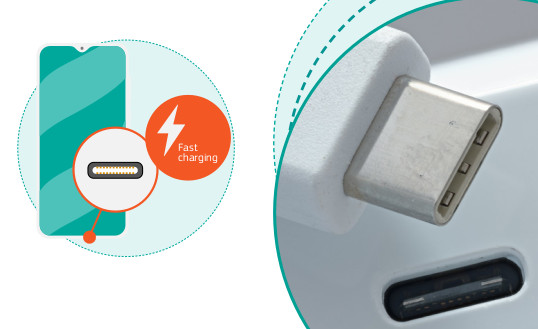
Following a resounding vote in favour of eliminating alternate charging techniques by members of the European Parliament, a standard charger for mobile devices will be adopted in 2024. All small and medium-sized portable electronics must have USB-C charging ports by the end of 2024 in order to be marketed in the EU. This includes mobile devices including smartphones and tablets, cameras, headphones, and portable gaming systems.
Parliament has demanded a single charger for a decade. Voluntary steps to reduce the number of mobile chargers failed to create outcomes for EU customers. On September 23, 2021, the Commission submitted its legislative recommendation.
New Law
The new law was passed by the parliamentary session on Tuesday with 602 votes in favour, 13 against, and 8 abstentions. It is part of the EU’s larger effort to reduce e-waste and empower consumers to make more environmentally friendly choices.
- Under the new rules, consumers won’t have to buy a new charger every time they buy a new device. Instead, they will be able to use one charger for a wide range of small and medium-sized portable electronic devices.
- No matter who makes them, all new phones, tablets, digital cameras, headphones and headsets, handheld videogame consoles and portable speakers, e-readers, keyboards, mice, portable navigation systems, earbuds, and laptops that can be charged with a wired cable and use up to 100 Watts of power will have to have a USB Type-C port.
Encouraging technological innovation
As wireless charging becomes increasingly common, the European Commission should indeed standardise compatibility criteria by 2024 to avoid negative consumer and environmental impacts. This will also get rid of the “lock-in” effect of technology, in which consumers become dependent on one company.
Better information and choice for consumers
Consumers will be able to determine if their existing chargers are compatible with new gadgets thanks to dedicated labelling. Buyers can decide whether to buy a new charging device when they purchase a new product. These new rules will encourage consumers to re-use chargers, saving them up to 250 million euros a year. Chargers account for approximately 11,000 metric tonnes of EU e-waste annually.
What’s next?
Before being published in the EU Official Journal, the Council must approve the Directive. 20 days after publication, it takes effect. Member States have 12 months to transpose and apply the rules. Products on the market before the rule’s implementation date are exempt.
Parliament’s rapporteur Alex Agius Saliba (S&D, MT) said:
The common charger will finally become a reality in Europe. We have waited more than ten years for these rules, but we can finally leave the current plethora of chargers in the past. This future-proof law allows for the development of innovative charging solutions in the future, and it will benefit everyone – from frustrated consumers to our vulnerable environment. These are difficult times for politics, but we have shown that the EU has not run out of ideas or solutions to improve the lives of millions in Europe and inspire other parts of the world to follow suit
